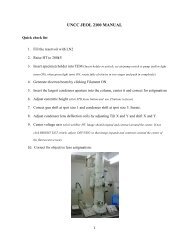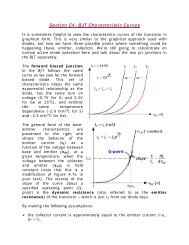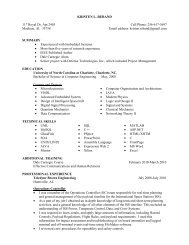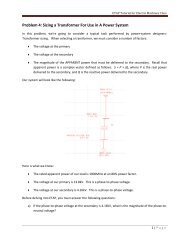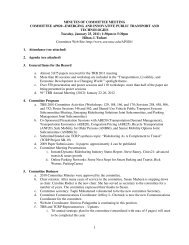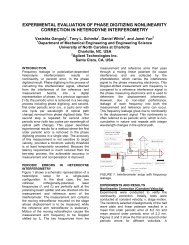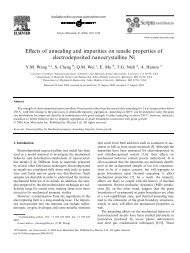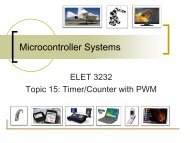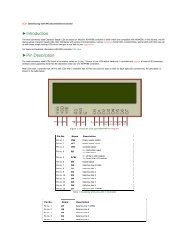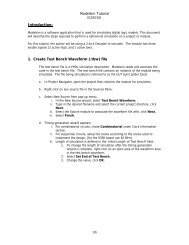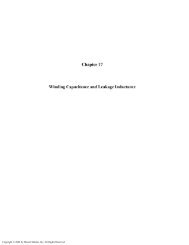ELET 3132L - Lab #1
ELET 3132L - Lab #1
ELET 3132L - Lab #1
You also want an ePaper? Increase the reach of your titles
YUMPU automatically turns print PDFs into web optimized ePapers that Google loves.
9. Now you can place the complementary parts – N channel MOSFETs. Use the same methods<br />
to place two of the IRF530 N channel MOSFETs on the schematic. These four transistors are<br />
all the parts needed for the logic gate. But as before you need to add a battery for power, two<br />
signal generators and ground connections.<br />
10. Choose Place→Parts again and select the SOURCE library. Add a battery by adding a VDC<br />
part to the schematic. Left click twice on the 0VDC and change it to 5V. Add the signal<br />
generators by adding two VPWL (Piece-Wise Linear) parts to the schematic. These are<br />
tougher to setup as you will have to describe the signal you want as pieces of lines. Be<br />
careful to setup the times and volts correctly. Left click twice on the top left signal generator.<br />
You will see the property editor screen as shown below.<br />
Figure 19: Property Editor Screen<br />
11. Figure 20 shows a single line of properties for the part. Use the scroll bar at the bottom to<br />
scroll far enough to the right to bring up the Time and Voltage slots as shown below:<br />
Figure 20: Single Line of properties<br />
12. Here is how to setup the signal generator. V1 is the voltage the generator will output at time<br />
T1, V2 at T2, V3 at T3, etc. YOU MUST ADD UNITS – s for seconds and v for volts. Here<br />
are the T’s and V’s to make a 500Hz square wave:<br />
<strong>ELET</strong> <strong>3132L</strong> Experiment <strong>#1</strong> 12 of 25




